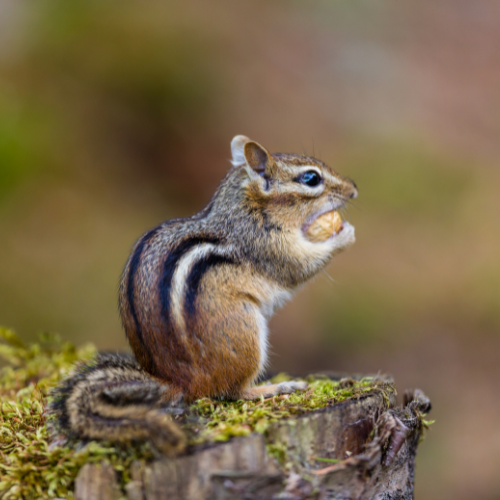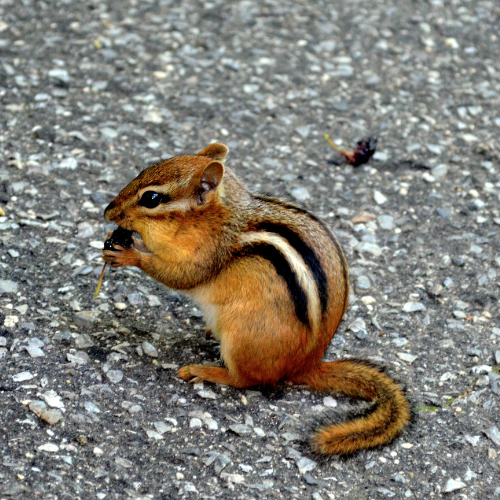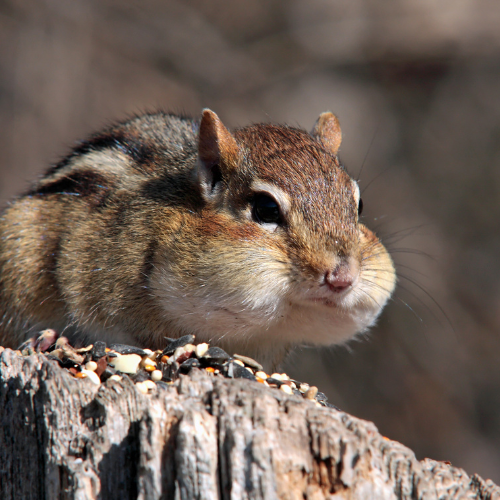Chipmunks
Introduction to
Chipmunks are small, striped rodents that are commonly found in North America. Known for their cheek pouches and energetic behavior, these animals can be both charming and troublesome. While they play a vital role in ecosystems by dispersing seeds and aerating soil, chipmunks can also cause significant damage to gardens and homes. This article explores the recognition, biology, habits, prevention, and professional handling of chipmunks, providing a comprehensive guide to understanding and managing these lively creatures.
Recognition
Chipmunks are small rodents, typically measuring about 5 to 6 inches in body length, with a tail that adds an additional 3 to 4 inches. They have reddish-brown fur with distinctive black and white stripes running down their backs and sides. Their cheeks are often full as they use their expandable cheek pouches to transport food. Chipmunks have large, dark eyes and small, rounded ears. They are most often seen scurrying along the ground, though they are also adept climbers. Their high-pitched chirping and chattering sounds are often heard in wooded or garden areas.
Biology
Chipmunks belong to the family Sciuridae, which includes squirrels and prairie dogs. There are about 25 species of chipmunks, with the eastern chipmunk (Tamias striatus) and the least chipmunk (Tamias minimus) being the most common in North America. Chipmunks are diurnal, meaning they are active during the day. They are omnivores, primarily eating seeds, nuts, fruits, insects, and small invertebrates. Chipmunks breed twice a year, in spring and late summer, with females giving birth to litters of 4 to 5 young after a gestation period of about 30 days. They hibernate during the winter, though they occasionally wake to eat from their stored food caches.
Habits
Chipmunks are known for their burrowing habits, creating extensive underground tunnels that can be up to 30 feet long. These burrows have multiple entrances and chambers for nesting and food storage. Chipmunks are solitary creatures, each maintaining its own territory. They are very active and spend much of their time gathering food to store for winter. In residential areas, chipmunks can cause damage by digging in gardens, chewing on wiring, and burrowing under structures, which can undermine foundations and lead to structural issues. Despite their small size, chipmunks can be quite destructive if left unchecked.
Prevention
Preventing chipmunk infestations involves making your property less attractive to these animals. Keep bird feeders away from the house and clean up any spilled seeds. Use hardware cloth or mesh to block entry points under porches, decks, and foundations. Trim back shrubs and trees that provide cover or access to buildings. Consider using mulch or gravel in garden beds instead of loose soil to deter digging. In gardens, use fencing or netting to protect plants and bulbs. Maintaining a clean and tidy yard will help reduce food sources and shelter for chipmunks, making your property less appealing to them.
Professional
If chipmunks have become a persistent problem, professional pest control services can provide effective solutions. STL Pest Control offers comprehensive management plans to address chipmunk infestations. Their experienced technicians will conduct thorough inspections to identify burrows, entry points, and areas of activity. They use humane trapping and exclusion methods to remove chipmunks from your property and prevent them from returning. Additionally, STL Pest Control provides advice on habitat modification and long-term prevention strategies. Professional intervention is essential for effectively managing chipmunk populations and minimizing damage to your property.



Our Office









